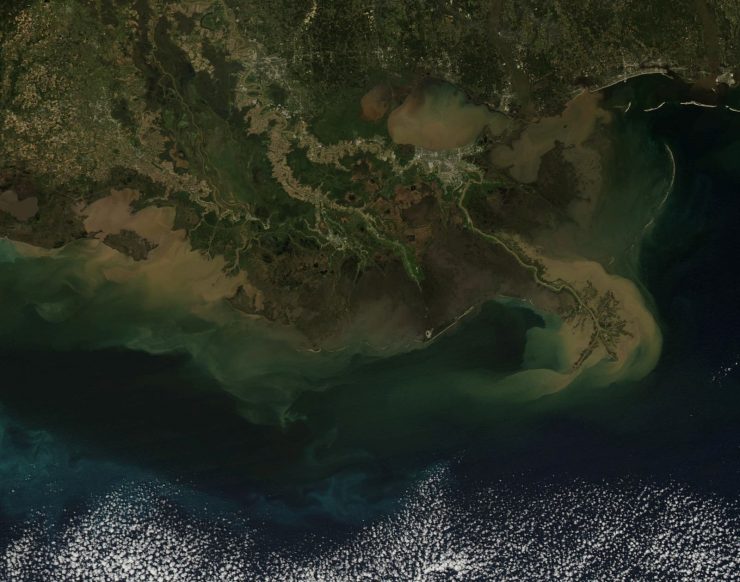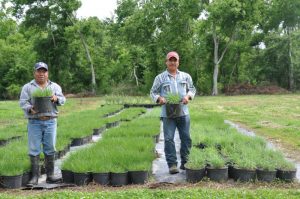
Spotlight: Restore the Mississippi River Delta
Louisiana’s coastline, including the Mississippi River Delta, is vanishing at an alarming rate. Since the 1930s, Louisiana has lost over 2,000 square miles of land, an area roughly the size of Delaware.
In fact, every 100 minutes a football field of land disappears into the Gulf of Mexico. The causes of loss of land are complex and varied, including the leveeing of the Mississippi River, construction of shipping channels and canals, oil and gas infrastructure, sea-level rise, and more.
While natural deltas exist in a state of constant change, the Mississippi River Delta’s natural cycles of change and rebirth have been greatly constricted by human activities, laying the groundwork for today’s ecological collapse and land loss.
So what can we do?
Restore the Mississippi River Delta has taken the helm and launched multiple initiatives to reconnect the Mississippi River to its delta to protect its people, wildlife, and jobs in the region, as well as across the United States.
Restore the Mississippi River Delta is a coalition that includes the Environmental Defense Fund, National Audubon Society, the National Wildlife Foundation, Coalition to Restore Coastal Louisiana, and Lake Pontchartrain Basin Foundation.

Because there is no one cause to this issue, there is no one solution. The coalition adopted a Multiple Lines of Defense Strategy, developed by the Lake Pontchartrain Basin Foundation post-Katrina as a way to build resilience for communities and industries along the coast.
The MLODS involves reconnecting the river to its delta through land-building sediment diversions, strategic use of dredged sediments to build and sustain wetlands and barrier islands, improved management of the Mississippi River, and adopting community resilience measures. These are just a few of the many efforts Restore the Mississippi River Delta is involved in, and the list goes on.

One initiative is called sediment diversions, which mimics nature’s historic land-building processes by using the power of the river to move sediment and fresh water from the river into nearby basins. This process builds new land and provides a sustainable source of sand and mud, vital components for long-term wetland health.
Another project involves improving freshwater flows to reduce harmful saltwater intrusion, preventing the die-off of freshwater plants and trees!
The Lake Pontchartrain Basin Foundation has developed a Multiple Lines of Defense Strategy to combat coastal erosion. Below are the various ways Restore the Mississippi River Delta is completing its mission.
Sediment diversions builds new land and provides a sustainable source of sand and mud (necessary to sustain and increase wetland health over time).
Hydrologic restoration improves freshwater flows to reduce or prevent harmful saltwater intrusion.
Marsh creation, sometimes called dredging, uses sediment from the Mississippi River, nearby water bottoms, or offshore shoals to build land in shallow, open water areas, typically where land has been lost.
Freshwater diversions channels fresh water from the river into nearby basins to help maintain and increase the health of existing wetlands over the long term by reducing salter intrusion.
Ridge restoration, naturally elevated above the marsh surface and typically populated with tees, can protect important habitats, protect against storm surges, and help prevent saltwater intrusion.
Barrier island and headland restoration uses sand to rebuild and restore beaches and dunes andis an essential first line of defense against storms.
Oyster reef restoration uses natural and man-made materials to encourage the establishment of oysters to create living shorelines.

Erin Cohn is an Edit Intern at Nola Family Magazine.

